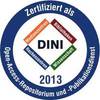Preview |
PDF, English
Download (28MB) | Terms of use |
Abstract
The inception of gravitational wave astronomy has plunged astrophysical sciences into a new era. Gravitational wave signals sourced by strong gravity regimes provide enormous information about the surrounding environments from which they came. This allows remarkably powerful studies to be performed regarding the fundamental nature of gravity, dark energy, and dark matter. These current and future studies require very high accuracy and precision in the physical models they develop in order to extract all potential information from observed data. In particular, due to the feeble coupling between matter and gravity, very strong gravitational environments provide the highest quality of information regarding surrounding fundamental fields. To that end, the primary objective of this thesis is to generate models of dark matter interacting with highly dynamical black hole systems and forecast potential observability using upcoming gravitational wave observatories. Several studies and tools were developed to further this goal, culminating in new numerical relativ- ity toolkits, parameter constraints, and theoretical results. While much more work still needs to be done to fully leverage the prowess of upcoming gravitational wave observatories, the work in this thesis provides great advancements and powerful tools in the pursuit of understanding the funda- mental building blocks of the universe.
| Document type: | Dissertation |
|---|---|
| Supervisor: | Heisenberg, Prof. Dr. Lavinia |
| Place of Publication: | Heidelberg |
| Date of thesis defense: | 11 November 2024 |
| Date Deposited: | 26 Nov 2024 08:55 |
| Date: | 2024 |
| Faculties / Institutes: | The Faculty of Physics and Astronomy > Institute for Theoretical Physics |
| DDC-classification: | 530 Physics |
| Controlled Keywords: | physics, dark matter, black holes |









